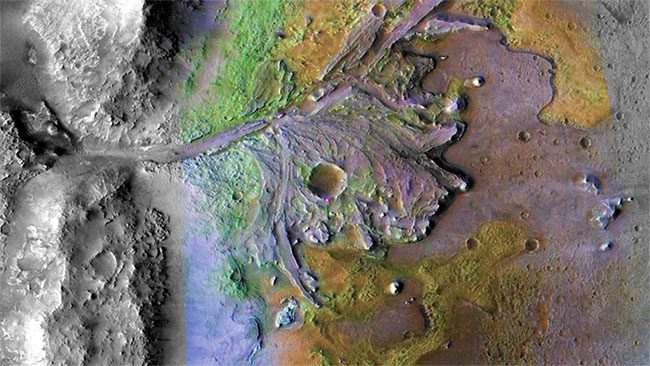NASA has announced that the alien-hunting drone Ingenuity is not truly at rest after three months of bidding farewell to humanity.
Ingenuity is one of the two explorers in NASA’s Mars 2020 mission, launched from Earth in mid-2020 with the goal of searching for evidence of ancient or living extraterrestrial life on Mars.
Unfortunately, a few months ago, Ingenuity—a helicopter-style robot—sustained damage to its rotor. It bid farewell to humanity and was declared to have completed its mission on January 25.
However, NASA has recently revealed that this resilient robot is not really dead.

Ingenuity and its companion Perseverance in the distance – (Graphic: NASA).
According to the latest announcement, NASA states that their small robot continues to utilize its remaining power to collect data from the site of its mishap and transmit it back to Earth.
On April 16, NASA officially received the final data package from this explorer.
Nevertheless, Ingenuity is not at rest yet. It is attempting to make the most of its remaining power to gather one last set of data about the area that NASA believes contains evidence of extraterrestrial life, which is also where it met its fate and remains forever.

A section of the ancient river delta inside Jezero Crater, where Ingenuity operated and encountered trouble – (Photo: NASA).
However, to retrieve the final gift that Ingenuity has left for humanity, NASA will need to launch another mission to Mars, utilizing another robotic craft or sending a crewed mission to directly reach Ingenuity.
Ingenuity was originally the companion of another well-known extraterrestrial life-hunting robot, Perseverance.
The mission of Ingenuity was to scout from above, gathering preliminary data to assist its companion—a slower, heavier rover equipped with various tools—in continuing to collect in-depth data.
During the Mars 2020 mission, scientists hoped that Ingenuity would operate for 30 days and complete five test flights around the area where it and its companion landed.
However, the duo has tirelessly worked together for nearly three years since landing in June 2021. When Ingenuity encountered trouble, Perseverance attempted to find it, but unfortunately, the helicopter had broken a rotor and damaged another, rendering it unable to fly.
Perseverance is still functioning well and will continue to explore the Jezero Crater area, a 45-kilometer diameter impact crater that contains both a river delta and a vast lake, where NASA believes life once thrived or still exists.
NASA’s rover robots are incredibly resilient. Perseverance’s predecessor, Curiosity, is still operational in Gale Crater, another “habitable zone” located about 2,300 kilometers from Jezero Crater. Curiosity was launched in 2011.


















































